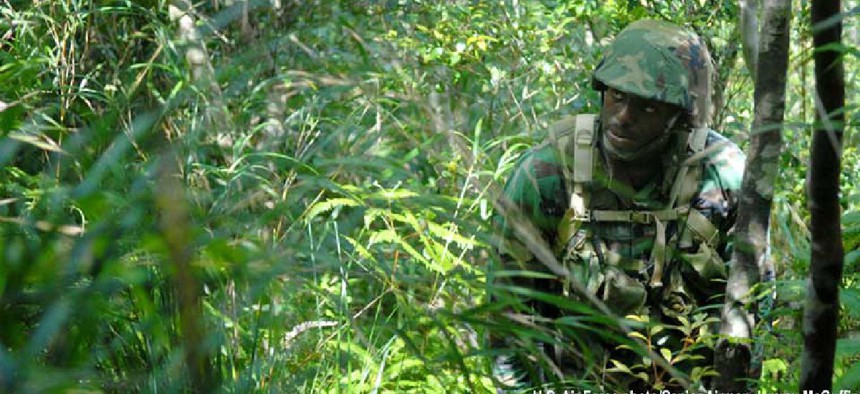DARPA seeks climbing, flying robotic radio nodes

The Defense Advanced Research Projects Agency wants robots that can arrange themselves into traveling 3D mesh networks so squad members can communicate on missions where mobile radio access is unavailable.
Small military units conducting hostage rescue, scouting and training missions depend on radio communications to coordinate actions with each other and their commanders. In some areas, such as in caves or jungles with heavy foliage, mobile radio frequency (RF) communications are difficult to sustain. In World War II, for example, radio communications in tropical jungles required the use of long strings of wire as a transmission medium.
Recent developments in RF mobility gain – the technique of moving radios to locations where they can better access power for transmission -- have made it possible to construct a dense, 3D mesh network of radio relays that can support and augment communications for reconnaissance and hostage rescue missions, for example.
The Defense Advanced Research Projects Agency wants to explore this technology and is looking for solutions that will allow small groups of warfighters to communicate even in the thickest jungles where wet foliage makes radio transmission particularly difficult.
The SQUad Intelligent Robotic Radio Enhancing Links (SQUIRREL) program is inviting small businesses to submit proposals for small, lightweight, low-power robotic devices that will allow team members to maintain connectivity with each other and to the larger Defense Department communications grid for status, situational awareness and directions as needed.
DARPA expects SQUIRREL solutions will use climbing, flying or hybrid robots to form a self-positioning 3D mesh network that can maintain small-squad communications through a combination of repositioning, frequency selection and beamforming, or focusing a signal toward a receiver. These devices should be quiet, difficult to observe and unlikely to be detected or intercepted.
Additionally, the mesh network must adapt as the squad moves through the terrain, allowing the nodes or devices experiencing the best chance of establishing line-of-sight access to drones or other overhead assets to connect for communications with unit commanders.
SQUIRREL advances a 2008 DARPA project called LANdroids, which used small ground-based robotic radio relay nodes to configure and maintain mesh networks that were capable of reasoning about their positions relative to each other and to individual warfighters.
DAPRA expects the technology can also be used for civilian search and rescue, such as aiding in searchers for lost children or hikers. SQUIRREL solutions could also support organizations exploring tropical and densely foliated areas to count endangered species or identify new sources of pharmaceuticals.
Responses are due June 29. Read the full RFI here.
NEXT STORY: Should TSA be regulating pipeline cybersecurity?






